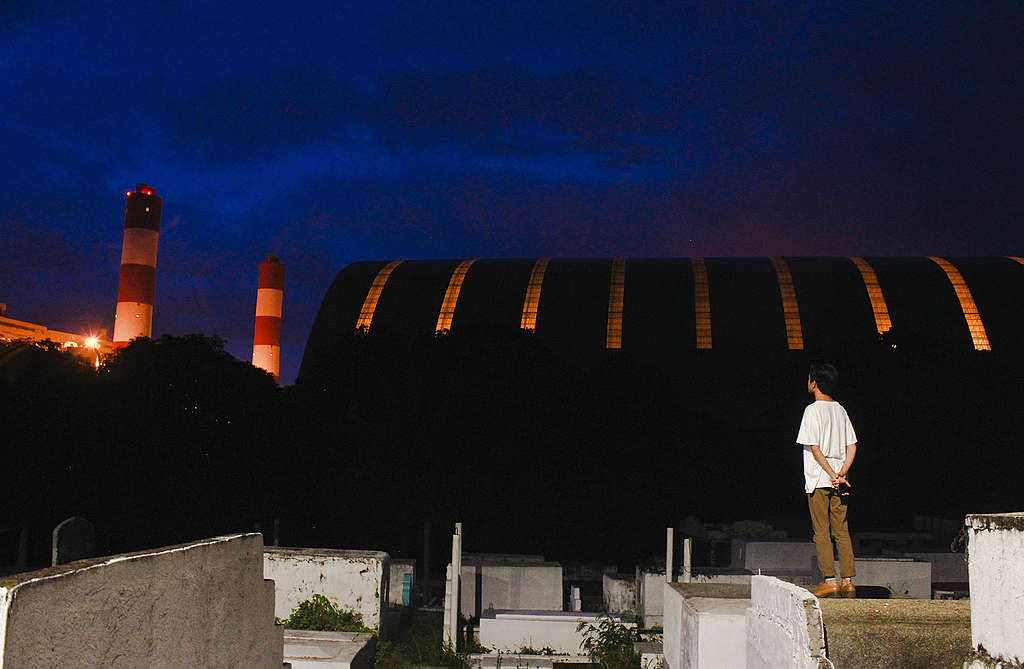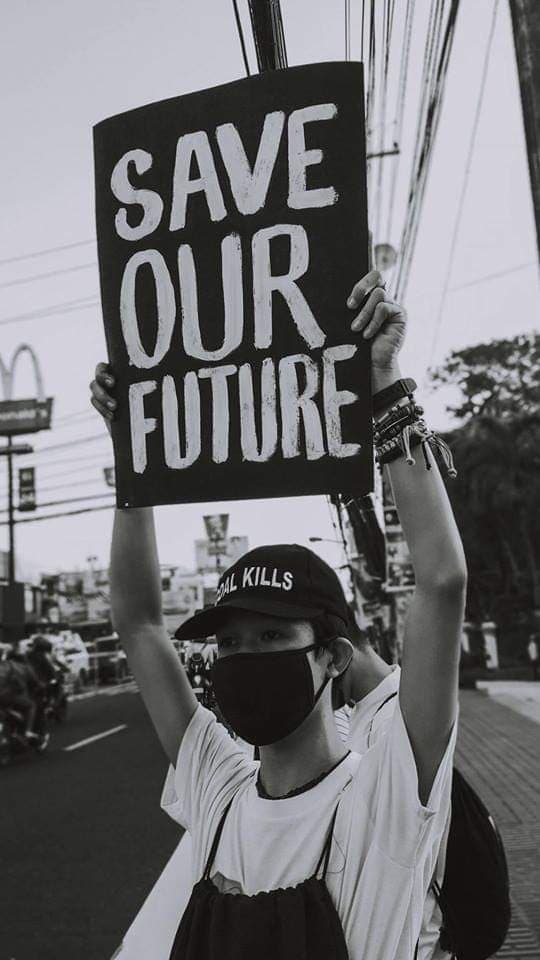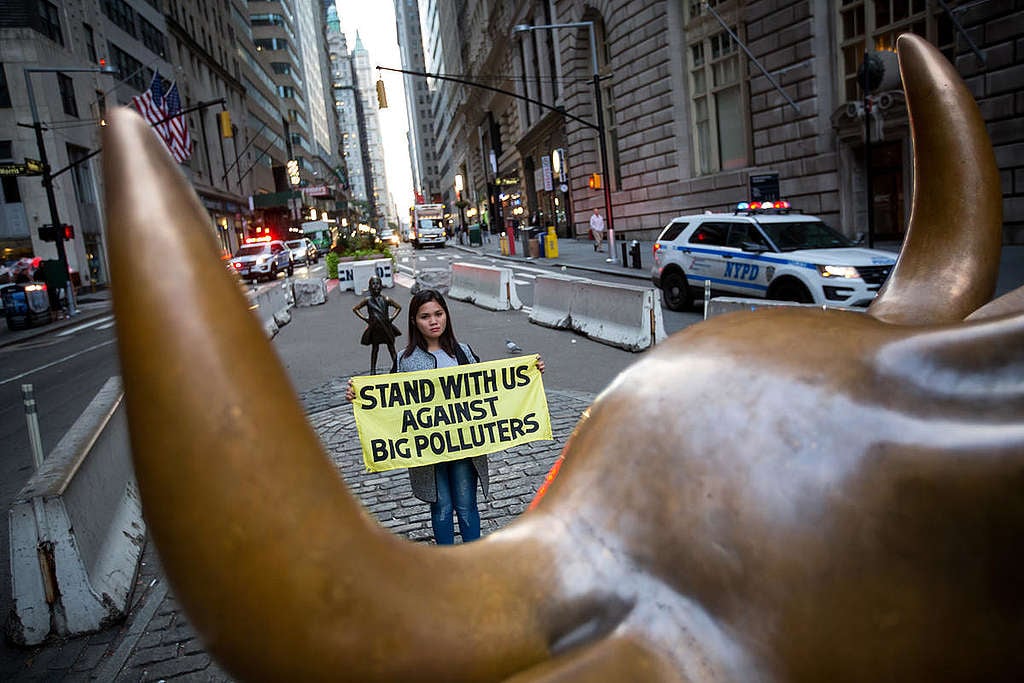My 16th and 17th years were dedicated to pushing for a more livable future through opposing a proposed local coal plant and other environmental initiatives. I studied coal plants, with the help of experts and other older climate advocates. I tried my hardest to understand the issues involved in the campaign, from the effects of burning coal to the environment, to the development of the economy, and the local and national laws and legislations regarding energy and ecology. Aside from learning and sharing what I have learned, especially to my fellow youth, I have also wandered the outstretched streets, together with many youth, to register our opposition to the coal plant and to call for further development of renewable energy in our province. For more than a year, I have fought an enemy that I haven’t even seen.

Coal-fired power plant in Lamao, Limay, Bataan.
On September 1, 2019, I had the privilege to see the face of a coal plant as part of the Greenpeace Philippines camp to which I was invited. I know I was, and am, very lucky to have this experience because 90% of my fellow climate youth activists in my province have not had the opportunity to visit a coal-impacted community. On September 1, I saw the 600 MW coal-fired power plant in Lamao, Limay, Bataan beside the 140MW oil refinery of Petron. It was an overwhelming sight – the contrast of white and red-orange chimney with the blue heavens, the monstrously big coal ash pile dome that looked majestic because of its size, and the radiant lightings that allowed one to see the minutiae of the coal plant even when one was standing dozens of meters away.
We stayed at the area for only 15 minutes because we needed to head back to Metro Manila. But the stories of struggle and continuous resistance of the organized community living near the coal plant both broke my heart and inspired me.
The situation of the communities living in poverty beside the coal plant was shocking. Most of them were still impoverished despite the “progress” that coal proponents promised. Moreover, in addition to poverty, the community has to suffer the additional burden of polluted air, skin and respiratory disease, and even death.
The people of Bataan are people of inspiration. They have fought and fought and fought destructive industries after the other because aside from coal-fired power plant and oil refinery in Limay, there is a 650 MW coal plant in Mariveles, Bataan. Their story of resistance is a story worth learning for communities struggling against destructive industries. Their story is an inspiration for a young Negrosanon like me. In the face of the current climate crisis, we need stories of inspiration, hope and resistance to keep us going after our right to live in a livable future.
JUST IN: Fred dela Cruz, a fisherman, is in front of @Shell‘s headquarters in Manila to call for #ClimateJustice pic.twitter.com/2nzlPVeJQj
— Greenpeace Philippines (@gpph) September 17, 2019
Even with hardships, the communities in Limay still continue their fight. One advocate told us that his mercury level went higher after the establishment of the coal plant and he cited some symptoms which included forgetfulness, hence the potential risk of having alzheimer’s. He also said that the fish catch of the fisher folks had decreased which made the living of local fisher folks even harder.
After hearing the stories from 3 activists in Limay, I felt that my involvement in the anti-coal movement in Negros was justified and validated. My heart bleeds for them – that they have to endure the difficulties for the profit of a company. No single person on this earth deserves to experience living near coal plants. Numerous studies have already shown that coal-fired power plants are threats to public health, especially to the children, elderly and other vulnerable sectors.
As I head back to Negros, I was encouraged more than ever to resist destructive energy and promote clean and affordable renewable energy for my love of the people in my island and in consideration of the global climate crisis. What I saw and heard from the people in Bataan is exactly what I don’t want to happen in Negros, and to her people.

Joshua Villalobos calling for a Coal-free Negros
As a young climate activist, I am determined more than ever to fight for my future. I have now confirmed that it will be our generation who will suffer from the dreadful effects of climate catastrophe. This is why young people should stand up, speak out, and be involved in the discussion regarding our future. Young people in the developing countries like the Philippines should continuously call for climate justice and the young people from developed countries should stand in solidarity with them by calling upon their governments to be faithful and proactive to the Paris Agreement.
It is time that we urge our leaders to take more radical actions to climate change. Radical actions means saying no to coal, no to fossil fuels, and no to corruption.
Joshua Villalobos is a 17-year old activist in Negros Occidental. He is one of the convenors of the local coalition of leaders and organizations, Youth for Climate Hope.

Filipinos are enduring the worst impacts of climate change, caused by greedy corporations. It’s time to hold them to account!
